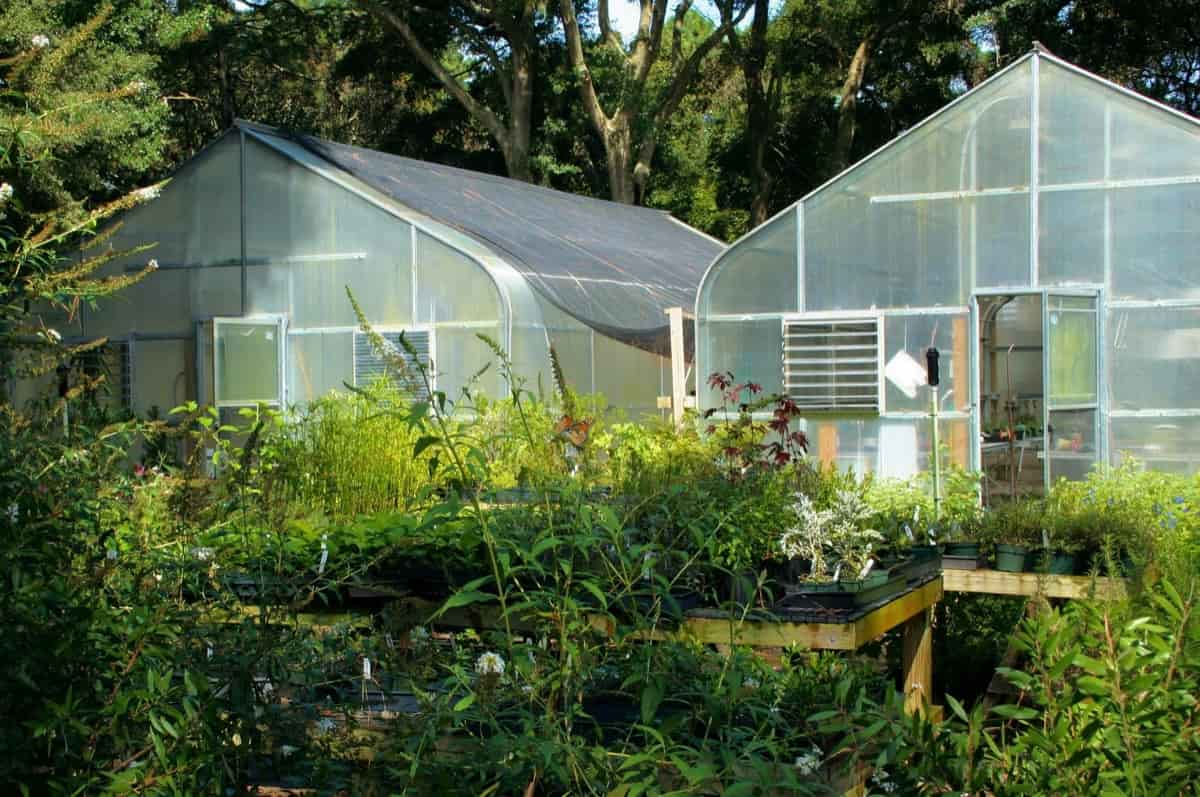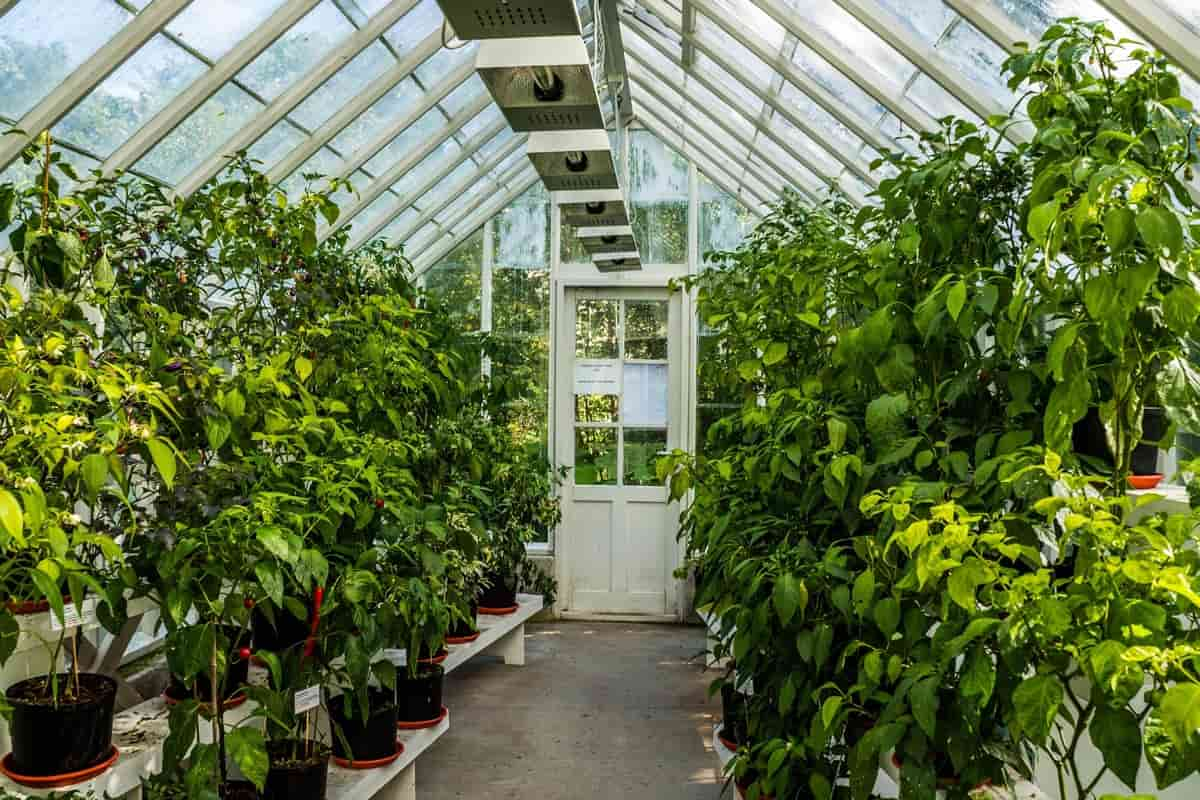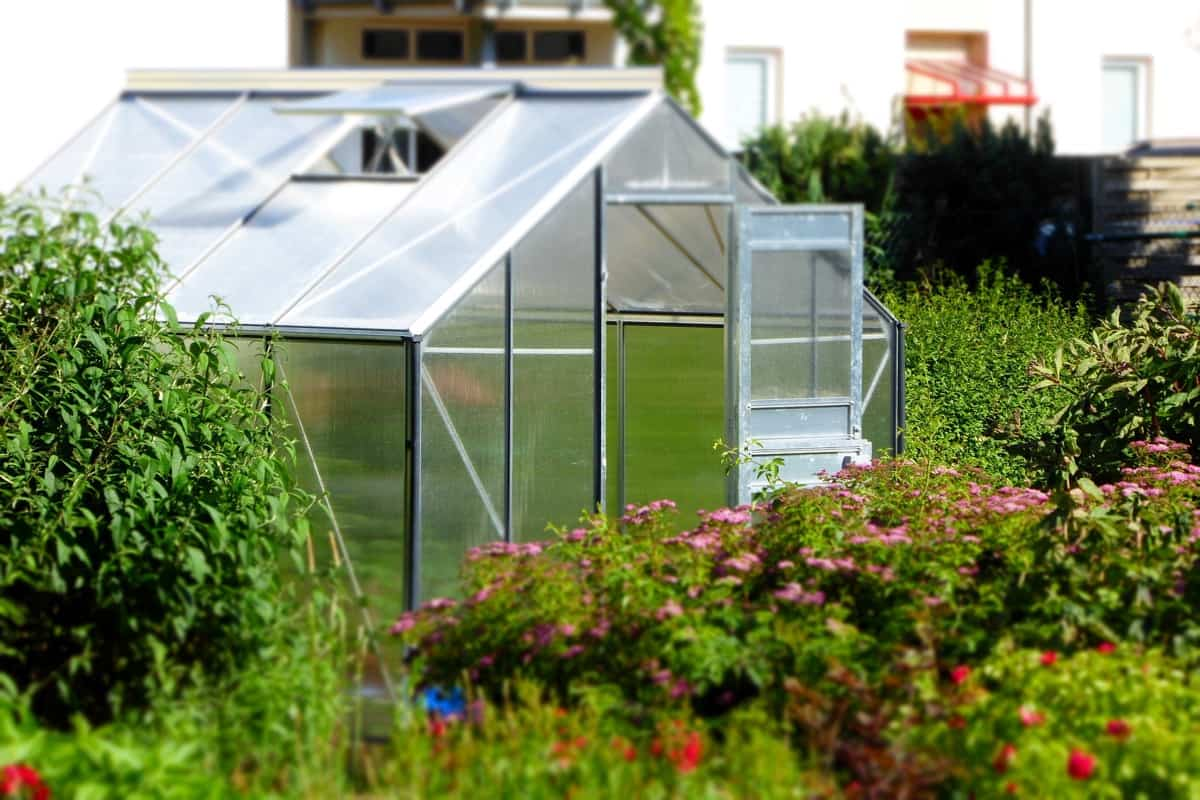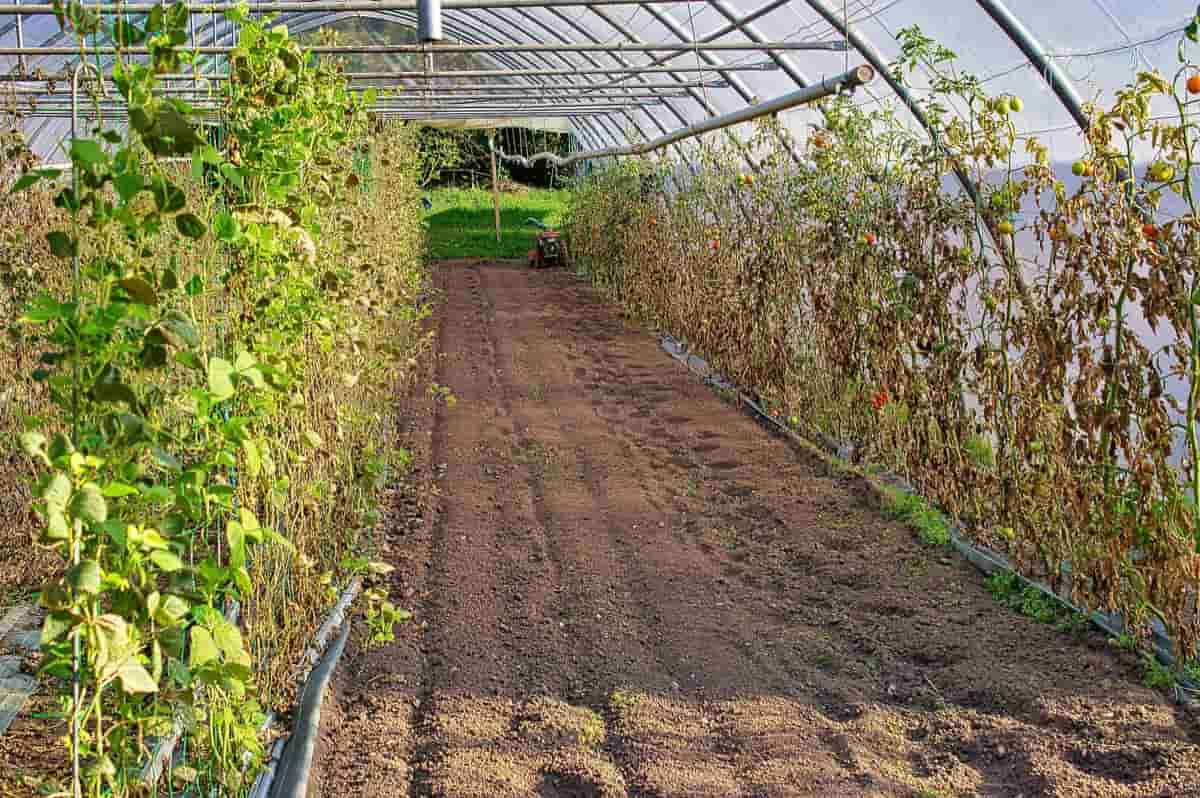Glasshouse technology, also known as Glasshouse technology, refers to using artificial structures to create a controlled environment for crop growth. These structures, commonly made of glass or plastic, allow farmers to protect crops from extreme weather conditions, pests, and diseases while providing the ideal conditions for growth. This technology has been around for centuries and has continually evolved to adapt to new growing techniques, crop varieties, and weather conditions.

The most basic function of glass house farming technology is to create a suitable environment for plant growth. This typically involves controlling temperature, humidity, light, and other environmental factors. Many equipment and systems are used to do this, such as heating and cooling systems, ventilation systems, and lighting systems.
These systems can be automated, making it easy to maintain optimal growing conditions. Glasshouse technology also allows farmers to grow crops year-round, regardless of the climate. By controlling the environment inside the Glasshouse, farmers can create ideal growing conditions, even during seasons when it would be too cold or too hot to grow crops outside.
This technology also enables farmers to cultivate high-value crops, such as orchids, tomatoes, and cucumbers, that are not typically grown in a particular region. Additionally, glass house technology enables farmers to use various growing systems like hydroponics, aeroponics, and aquaponics, which are different ways of growing plants without soil. Also, it can enable farmers to implement integrated pest management techniques to control pests and diseases.
Glasshouse farming
Benefits of Glasshouse technology
- Increased Yields: By controlling the temperature, humidity, and light levels within a Glasshouse, farmers can optimize growing conditions for their crops. This can lead to higher yields and a longer growing season, as crops can be protected from extreme weather conditions and pests.
- Reduced Pesticide Use: In a controlled Glasshouse environment, farmers can use integrated pest management techniques to control pests and diseases, which can reduce the need for chemical pesticides. Additionally, by controlling the growing environment, farmers can create less favorable conditions for pests and diseases, reducing the need for pesticides.
- Year-round Production: Glasshouses allow for year-round crop production, which means fresh produce can be available even in winter. This can help farmers to increase their revenues and market their products all year round.
- Crop diversification: Glasshouses enable farmers to grow a wider variety of crops, including high-value crops, that are not typically grown in a particular region, providing farmers with new revenue streams.
- Growing systems: Glasshouse technology allows for various growing systems, such as hydroponics, aquaponics, and aeroponics which offer new ways for crop production, these growing systems often require less water, less land, and less fertilizer.
- Adaptation to changing climate: Glasshouse technology can help farmers to adapt to changing weather conditions, such as increased heat and drought, and extreme weather events, such as hurricanes and floods, which have become more frequent in many regions as a result of climate change.
- Better control: It also enables farmers to have better control of their crop development; they can monitor plant growth and quickly respond to issues like pests or diseases, which can result in a healthier crop.
In case you missed it: Kashmiri Apple Cultivation in India: Farming Practices, Production Methods, and Yield

However, it is important to remember that Glasshouse farming requires significant capital, energy, and labor costs. Proper design, management, and maintenance are essential to ensure optimal performance and energy efficiency.
Crops that are grown in Glasshouse
- Tomatoes: Tomatoes are one of the most prevalent Glasshouse crops. They are relatively easy to grow and have a long growing season, making them a profitable crop for many Glasshouse growers.
- Cucumbers: Cucumbers are another popular Glasshouse crop. They require high humidity, which can be easily provided in a Glasshouse. They are a relatively fast-growing crop with a short growing season.
- Peppers: Peppers are another Glasshouse crop that is relatively easy to grow and has a long growing season. They require high light levels and consistent temperatures, which can be easily provided in a Glasshouse environment.
- Lettuce and Greens: Leafy greens, such as lettuce, spinach, and arugula, can be grown year-round in a Glasshouse and vertically to save on space.
- Herbs: Glasshouse-grown herbs, such as basil, cilantro, and parsley, are popular among consumers for their freshness, as well as for their higher concentrations of essential oils and phytochemicals compared to field-grown herbs.
- Strawberries: Strawberries can be grown in a Glasshouse to extend the growing season, but they will need a specific growing environment, such as a hydroponic system, to give them the right environment they need to flourish.
- Flowers: Glasshouse-grown flowers, such as roses, lilies, and chrysanthemums, are popular among consumers for their beauty, fragrance, and color.
- Melons: Melons such as cantaloupe, watermelon, and honeydew melon can be grown in a Glasshouse, and they can have high yields, especially in hydroponic systems.
These are just a few examples of many different crops that can be grown in a Glasshouse. The crop type will depend on factors such as the size and location of the Glasshouse, climate conditions, and the crops’ specific needs and growing requirements.
Integrated Pest Management
Integrated Pest Management is a holistic, environmentally friendly method of managing pests, pathogens, and weeds that utilizes a combination of biological, cultural, physical, and chemical methods to maintain a healthy crop and minimize pest problems. The goal of IPM is to use the least toxic and most effective methods of control to keep pests and diseases from reaching economic threshold levels. It also emphasizes prevention, monitoring, identification, and action before pest populations reach damaging levels.
In case you missed it: State Wise Tomato Farming Seasons in India: Growing Best Varieties and Production Yield

IPM is widely adopted in Glasshouse farming as it can be applied to many pests, pathogens, and weeds, including insects, mites, fungi, bacteria, and nematodes. It can be tailored to specific crops and Glasshouse environments. It can help to reduce the use of chemical pesticides, minimize the potential for pesticide resistance, reduce the risk of environmental contamination, and improve the overall sustainability of crop production in the Glasshouse.
Sanitation of Glasshouse
Sanitation is a key component of Integrated Pest Management (IPM) in Glasshouse farming. A clean and well-maintained Glasshouse, with a focus on proper sanitation and hygiene practices, can significantly reduce the risk of pest infestations and the spread of diseases. Sanitation measures such as removing weeds, algae, and organic matter from the walkways, disinfecting benches, and using new or disinfected pots, flats, and trays can significantly reduce the risk of pests and pathogens entering the Glasshouse.
Additionally, a weed-free zone should be maintained outside of the Glasshouse. This practice may help reduce pest migration inside the Glasshouse. Moreover, having a clean and healthy growing media and avoiding plant material in the media mixing area also help reduce the chance of contamination. Also, promptly remove unhealthy plants and plant parts from the Glasshouse. Maintaining the water source free of pathogens and keeping hose ends off the floor can also prevent pests and diseases.
As you’ve noted, IPM is a holistic and flexible approach. It relies on monitoring, sampling, and record-keeping to determine when control options are needed to keep pests below an economically damaging threshold. By using a combination of techniques and strategies, IPM can help to optimize pest control in an economically and ecologically sound way.
In case you missed it: High Yield Hybrid Apple Varieties in India: State Wise

Control of pests in Glasshouse / Integrated Pest Management (IPM)
- Monitoring or Scouting: Monitoring or scouting is essential for the early detection of pests and diseases. This can be done through individual plant inspections, the use of sticky cards, or the use of indicator plants.
- Pest Identification: Identifying pests and their life stages is crucial for effective management. Knowing pests’ life cycles and behaviors helps predict when they will be most active and vulnerable to control measures.
- Record Keeping: Proper record keeping is an essential aspect of an IPM program, as it identifies trends and the direction of the pest management program.
- Exclusion Techniques: Exclusion techniques, such as using insect screens, can be used to prevent pests from entering the production area, minimizing the need for chemical controls.
- Cultural Practices: Cultural practices, such as soil testing and sanitation, can prevent problems before they occur, reducing the need for pest management.
- Biological Controls: Biological controls, such as beneficial insects, reduce the incidence of pest organisms.
- Insect Growth Regulators: Insect growth regulators are a type of insecticide that interfere with normal insect development or the molting process.
- Chemical Controls: Chemical controls can be an effective tool in an IPM program when used correctly. Careful selection of the appropriate
The success of Integrated Pest Management (IPM)
- Covering soil floor surfaces with concrete, black plastic, or weed barrier can prevent pests and diseases from entering the Glasshouse through the soil.
- Using resistant varieties of plants, often developed through plant breeding, can be more tolerant of pests, diseases, and environmental conditions. This can help to reduce the risk of pest infestations and disease outbreaks.
- Keeping people and “pet plants” out of crop areas as much as possible can help to reduce the risk of introducing pests or diseases into the Glasshouse.
- Pasteurizing the growing medium can help to kill pathogens and pests that may be present in the soil before planting.
- Keeping doors closed can help to prevent pests and diseases from entering the Glasshouse. Installing screen doors can be an excellent solution to prevent the entrance of flying insects.
Combined with an IPM program, these practices can help create an environment less conducive to pests, reducing the need for chemical controls and increasing the chances of success for the Glasshouse operation.
In case you missed it: A Guide to Understand Harvesting and Yield in Agriculture/Farming/Gardening: Check How this Guide Helps Beginners

How to increase yield in Glasshouse
- Climate Control: Optimizing the growing environment is essential for high crop yields. This includes controlling temperature, humidity, light levels, and other environmental factors to create optimal conditions for plant growth.
- Lighting: Adequate lighting is critical for photosynthesis and plant growth. Glasshouses can have artificial lighting systems to supplement natural light and increase yields.
- Water and Nutrient Management: Adequate irrigation and proper nutrient management are essential for maintaining healthy crops and increasing yield. Using techniques like hydroponics or other soilless growing systems can also increase yields.
- Crop Selection: Choosing suitable crops to grow in the Glasshouse is important in increasing yields. High-yielding crops that are well-suited to the Glasshouse environment will typically produce better results than those that are not.
- Crop Rotation: Rotating crops can help reduce the build-up of pests and diseases and improve soil fertility. This can lead to higher yields over time.
- Pest and Disease Control: Pests and diseases can reduce yields by causing damage to crops. Implementing an Integrated Pest Management (IPM) program can help to prevent or control pests and diseases, increasing yields.
- Proper Maintenance: Regular Glasshouse maintenance can help keep the environment optimal for plant growth. Properly maintaining the structure, irrigation, and cooling systems can reduce downtime, increase yields and extend the lifespan of the Glasshouse.
- Monitoring and Optimization: Regular monitoring of environmental conditions, crop growth, and pest populations can help identify optimization opportunities. This helps ensure that conditions are optimal for growth at all times and identifies and addresses any issues that may arise quickly.
Glasshouse farmers can increase yields, improve crop quality, and generate a more sustainable and profitable operation by focusing on these critical areas.
In case you missed it: Top 19 Steps/Ways/Methods to Boost Lettuce Yield: How to Increase Production, and Quality

Conclusion
Glasshouses can be an effective tool for disease and pest prevention. The enclosed nature of Glasshouses can help prevent pests’ entry while also providing more control over environmental factors such as humidity, temperature, and light levels that can affect plant health. By controlling people’s access and other elements, the Glasshouse can reduce the risk of bringing pests or diseases into the growing area.
Additionally, the ability to isolate problems by moving diseased or infected plants away from healthy plants prevents the spread of diseases and pests, thereby increasing crop yield and quality. Using an Integrated Pest Management (IPM) approach, which emphasizes prevention, monitoring, and record-keeping can help to ensure that pests and diseases are controlled before they reach an economically damaging threshold.
Using cultural practices like soil testing, sanitation, and crop rotation, along with exclusion techniques and biological controls, can help to reduce the amount of chemical pesticides that need to be used, improving environmental sustainability and reducing the risk of pesticide exposure for workers and consumers.
- Types of Pesticides Used in Agriculture: A Beginner’s Guide
- Economical Aquaculture: A Guide to Low-Budget Fish Farming
- 15 Common Planting Errors That Can Doom Your Fruit Trees
- How to Make Houseplants Bushy: Effective Tips and Ideas
- Innovative Strategies for Boosting Coconut Pollination and Yield
- Pollination Strategies for Maximum Pumpkin Yield
- The Complete Guide to Chicken Fattening: Strategies for Maximum Growth
- Natural Solutions for Tulip Problems: 100% Effective Remedies for Leaf and Bulb-Related Issues
- Revolutionizing Citrus Preservation: Towards a Healthier, Greener Future
- Natural Solutions for Peony Leaf and Flower Problems: 100% Effective Remedies
- Maximizing Profits with Avocado Contract Farming in India: A Comprehensive Guide
- Natural Solutions for Hydrangea Problems: 100% Effective Remedies for Leaf and Flowers
- The Ultimate Guide to Choosing the Perfect Foliage Friend: Bringing Life Indoors
- From Sunlight to Sustainability: 15 Ways to Use Solar Technology in Agriculture
- The Ultimate Guide to Dong Tao Chicken: Exploring from History to Raising
- The Eco-Friendly Makeover: How to Convert Your Unused Swimming Pool into a Fish Pond
- Mastering the Art of Delaware Chicken Farming: Essentials for Healthy Backyard Flocks
- 20 Best Homemade Fertilizers for Money Plant: DIY Recipes and Application Methods
- How to Craft a Comprehensive Free-Range Chicken Farming Business Plan
- Brighten Your Flock: Raising Easter Egger Chickens for Beauty and Bounty
- How to Optimize Your Poultry Egg Farm Business Plan with These Strategies
- Subsidy for Spirulina Cultivation: How Indian Government Schemes Encouraging Spirulina Farmers
- Ultimate Guide to Raising Dominique Chickens: Breeding, Feeding, Egg-Production, and Care
- Mastering the Art of Raising Jersey Giant Chickens: Care, Feeding, and More
- Ultimate Guide to Raising Legbar Chickens: Breeding, Farming Practices, Diet, Egg-Production
- How to Raise Welsummer Chickens: A Comprehensive Guide for Beginners
- How to Protect Indoor Plants in Winter: A Comprehensive Guide
- Ultimate Guide to Grow Bag Gardening: Tips, Tricks, and Planting Ideas for Urban Gardeners
- Guide to Lotus Cultivation: How to Propagate, Plant, Grow, Care, Cost, and Profit
- Agriculture Drone Subsidy Scheme: Government Kisan Subsidy, License, and How to Apply Online
- Ultimate Guide to Raising Araucana Chickens: Breed Profile, Farming Economics, Diet, and Care
- Bringing Hydroponics to Classroom: Importance, Benefits of Learning for School Students
- Ultimate Guide to Raising Polish Chickens: Breed Profile, Farming Economics, Diet, and Care
- Ultimate Guide to Raising Australorp Chickens: Profile, Farming Economics, Egg Production, Diet, and Care
- Silkie Chicken Farming: Raising Practices, Varieties, Egg Production, Diet, and Care
- Sussex Chicken Farming: Raising Practices, Varieties, Egg Production, Diet and Care